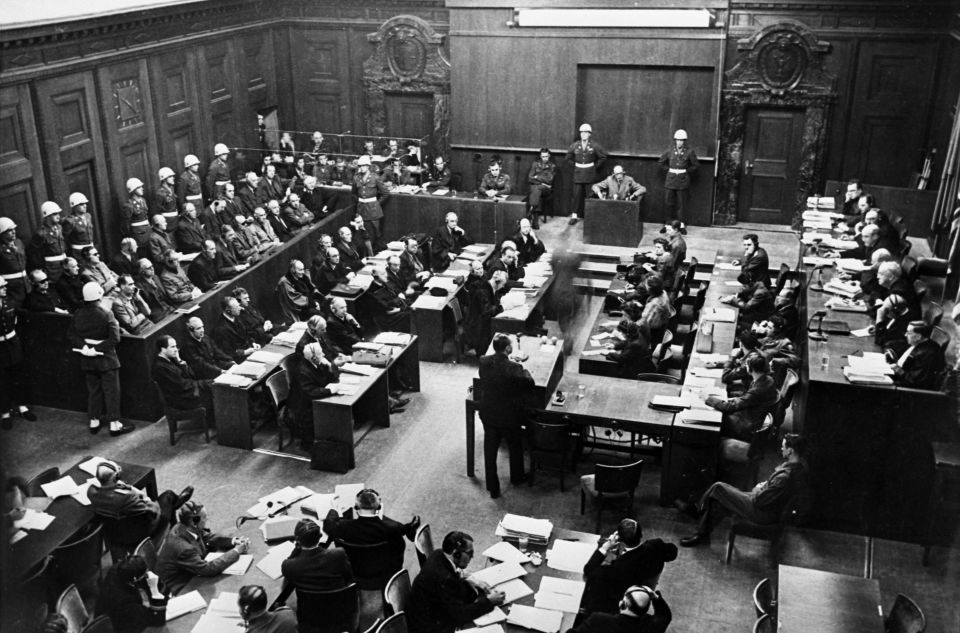The Nuremberg trials got under way in the Bavarian town on 20 November 1945. So who were the main defendants on trial?
In May 1945 Germany finally surrendered after the "Führer", Adolf Hitler, committed suicide along with his lover Eva Braun in his Berlin bunker.
Six months later the British, US, French and Soviet governments jointly funded a trials process in the city of Nuremberg, which was deliberately chosen because it had been there in the 1930s that the Nazis held their infamous rallies.
Hitler, his propaganda chief Joseph Goebbels or SS commander Heinrich Himmler never faced trial.
Goebbels had murdered his children and then committed suicide in Hitler’s bunker while Himmler also took the easy way out after being captured by the British.
Although a total of 199 people were put on trial, only 24 defendants were accused of being major war criminals.
So who was on trial?
Rudolf Hess
Rudolf Hess was once the second most important man in Germany after Adolf Hitler. He had been deputy leader of the Nazi Party.
On 10 May 1941, just weeks before Germany invaded the Soviet Union, Hess flew to Scotland to meet with an aristocrat, Douglas Douglas-Hamilton.
Various theories have been put forward about Hess’s mission - was he trying to arrange secret peace talks between Hitler and Churchill or he was trying to get the British to depose Churchill, who he believed was standing in the way of an Anglo-German agreement which would sell out France and the Soviet Union?
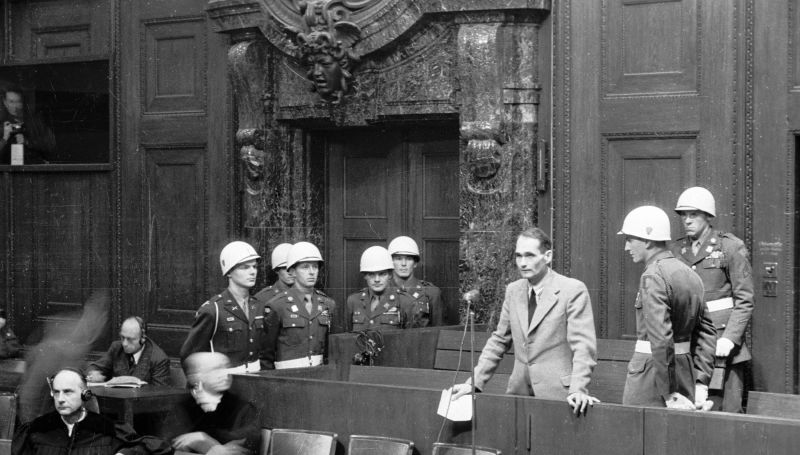
Whatever he was up to, Churchill rebuffed his overtures and Hitler treated him as a “madman” and a traitor.
Hess, who always denied he knew Germany was about to invade the Soviet Union, was convicted of conspiracy to cause crimes against peace and planning and initiating acts of aggression and was sentenced to life imprisonment.
He died, aged 93, in Spandau prison in west Berlin in 1987 and he was buried in Bavaria. His grave would become a shrine for neo-Nazis, so much so that the authorities decided to get rid of it.
In 2011 his remains were exhumed in secret, were cremated and then his ashes were scattered at sea.
Hermann Göring
When Hitler came to power in 1933 Göring was appointed chief of the Luftwaffe (the German air force) and director of the country’s Four Year Plan.
When war broke out Göring was Hitler’s right-hand man and heir apparent and Göring, along with SS chief Reinhard Heydrich, was at the forefront of the plan to exterminate all Jews in German-ruled Europe.
Göring, a pompous and preening presence throughout the trial, was convicted of war crimes, crimes against humanity, conspiracy to cause crimes against peace and planning and initiating acts of aggression.
Sentenced to death, he cheated the gallows by committing suicide with a cyanide pill he had hidden in his cell.
He was 53.
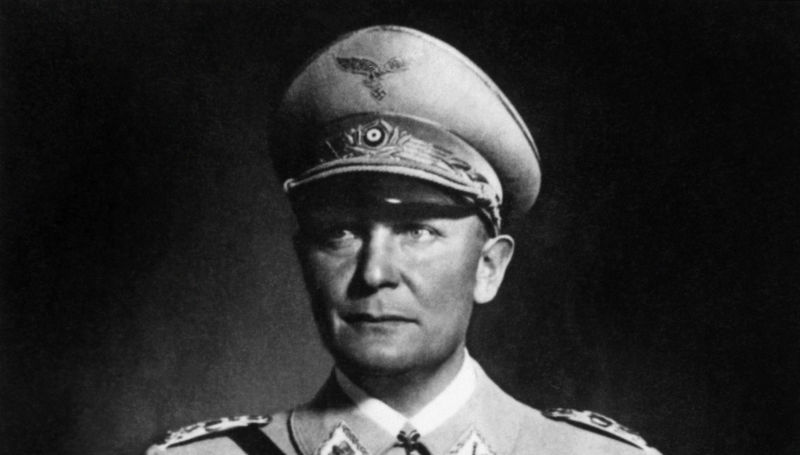
Martin Bormann
Martin Bormann was the ghost at the banquet, being the only one of the defendants to be tried in absentia.
Bormann rose through the Nazi Party to become Reichsleiter General of the SS and chief of staff to Rudolf Hess.
When Hess flew to Britain in 1941 Bormann immediately denounced him and soon became indispensible to Hitler, eventually being appointed the Führer’s personal secretary in 1943.
But he was much more than that and towards the end of the war he was running much of the German government and the Nazi Party apparatus.
Bormann, then 45, was last seen alive riding in a tank over the Weidendammer bridge in Berlin a few days before Germany surrendered and at the time of the trial and for years afterwards there were rumours that he had escaped and made his way to South America, where several other high-profile Nazis ended up.
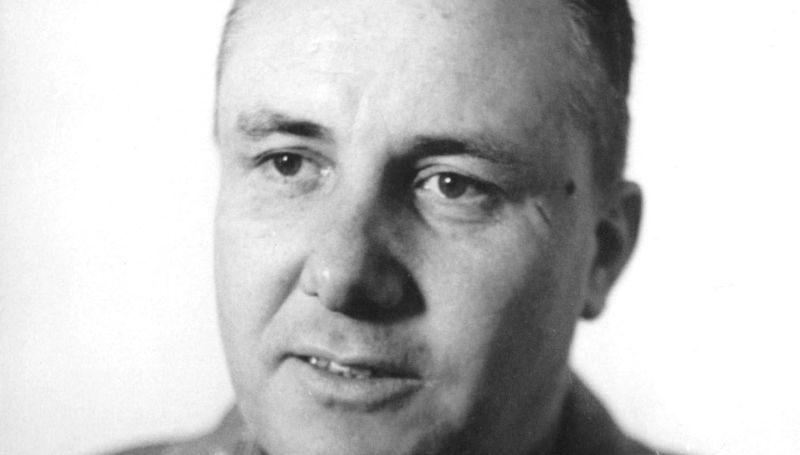
Convicted of war crimes and crimes against humanity, he was sentenced to death by hanging.
His remains were eventually discovered in Berlin in 1972, although he is believed to have died in 1945.
Karl Dönitz
For a few days after Hitler’s death, Admiral Karl Dönitz had been the leader of Nazi Germany.
Dönitz had led the German Navy, the Kriegsmarine, since 1943 but long before that he had been in charge of the U-boat campaign against Allied shipping in the North Atlantic, the Baltic and the Barents Sea.
During the trial he was accused of breaching the London Rules, which banned unrestricted submarine warfare.
Convicted of crimes against peace and war crimes, he was jailed for just 10 years.
He published his memoirs in 1958, in which he played down his role in the Nazi hierarchy, and lived out the rest of his life in virtual obscurity, popping up only in 1973 as a talking head on the documentary The World At War.
Dönitz died of a heart attack on Christmas Eve 1980, aged 89.
Albert Speer
An architect by profession, Albert Speer was at his happiest chatting with Hitler about how they would transform the cities of Germany and Austria after the war.
But Speer never got to carry out his and Hitler’s visions for Munich, Linz, Vienna or Berlin, which would have been reinvented as ‘Germania’.
In 1937 Hitler appointed Speer as General Building Inspector for Berlin, which included resettling thousands of Jews from the Scheunenviertel district.
Five years later he became Hitler’s Armaments Minister and turned his administrative skills to churning out huge quantities of guns, bullets, tanks and planes for the war effort.
Speer told his interrogators he had copied Henry Ford’s manufacturing principles to make the arms factories more efficient but had combined it with the use of Slavic, French and other slave labourers from occupied Europe.
Convicted of war crimes and crimes against humanity, he was jailed for 20 years.
Unlike many of the Nazi leaders Speer expressed remorse for his actions but always claimed he was unaware of the Holocaust.
Speer was released in 1966, published his hugely successful memoirs and ironically died in London, of a stroke, in 1981.
Hans Frank
Born in 1900, Hans Frank was the Governor-General of occupied Poland during the Second World War.
Frank joined the Nazi Party in 1921, after fighting in the First World War.
He is reported to have climbed the ranks of the party, working as chief legal counsel and later as Hitler’s personal lawyer.
As well as ordering the execution of hundreds of thousands of Poles, Frank was responsible for herding Polish Jews into ghettos before they were sent to concentration camps.
On 1 October 1946, Frank was found guilty of war crimes and crimes against humanity and sentenced to execution by hanging.
Wilhelm Frick
Wilhelm Frick was Germany’s Interior Minister between 1933 and 1943 and was then appointed Reich Protector of Bohemia-Moravia.
Frick, a doctrinaire Nazi, authored the anti-Semitic Nuremberg Laws in 1935 which banned marriage between “Aryan Germans” and Jews, gypsies or black people, and removed Jews’ rights to work in the civil service, medicine or many other industries. Jews who tried to flee Germany were forced to give up 90 percent of their assets in an exit tax.
Giving evidence at the trial, Frick said: “As far as the charge against me is concerned I have a clear conscience. My whole life was service to people and the Fatherland. By the fulfilment of my legal and moral duty I think I have earned punishment just as little as the tens of thousands of dutiful German officials who have now been imprisoned only because they carried out their duties.”
Frick, 69, was found guilty of war crimes, crimes against humanity and waging wars of aggression and was sentenced to death.
His last words before being hanged were: “Long live eternal Germany.”
Hans Fritzsche
After fighting as an infantryman in the First World War, Hans Fritzsche pursued Liberal Arts at university but left before finishing his degree.
Made famous through his influential role as radio commentator - he had his own show, "Hans Fritzsche Speaks" - the broadcaster was responsible for advising Hitler on his media message.
He was appointed as chief of the Home Press Division, the organisation in control of news publications throughout Germany, in 1938.
Fritzsche was put on trial for inciting and encouraging war crimes through the falsification of news.
Although the tribunal found Fritzsche guilty of making statements of a “propagandistic nature”, he was found not guilty of all charges and was eventually released from prison in 1950.
He died of cancer in 1953.
Walther Funk
Walther Funk, who fought in and was wounded during the First World War, was a journalist and became editor of the Berliner Börsenzeitung financial newspaper.
He resigned in 1931 and became a Nazi Party deputy in the Reichstag.
Hitler appointed him Economics Minister in 1938 and he also became president of the Reichsbank.
At Nuremberg he claimed he had very little power but he admitted he was “morally guilty” for his role in the confiscation of Jewish financial assets.
Sentenced to life imprisonment, he was released in 1957 on the grounds of ill health and died three years later.
Alfred Jodl
Alfred Jodl was chief of the German Armed Forces High Command and directed all military campaigns, under Hitler’s supervision.
He gave the green light to the brutal occupation of eastern Europe, the extermination of Jews and the subjugation of Slavic people.
Jodl, 56, was convicted of four counts - conspiracy, crimes against peace, war crimes and crimes against humanity.
He was sentenced to death and executed in October 1946.
Ernst Kaltenbrunner
Austrian-born Ernst Kaltenbrunner, was at the time of his arrest head of the Reichssicherheitshauptamt (RSHA), the German government agency which oversaw the operations of the SS and the Gestapo.
The Austrian-born lawyer joined the Nazi Party in 1930 but rose quickly in the SS where his brutal enthusiasm won him admiration from his superiors.
He headed up the SS in Austria after the Anschluss in 1937 and in January 1943 Heinrich Himmler chose him to succeed Reynhard Heydrich - who was assassinated by Czech partisans in Prague - as the head of the RSHA.
Kaltenbrunner took personal command of many Einsatzgruppen death squads as he sought to speed up the genocide of the Jews in 1944.
The hulking, scar-faced Kaltenbrunner was a terrifying figure and when he was arrested in an Alpine cabin in April 1945 his attempt to claim he was an innocent doctor was born to fail because of his notoriety.
The 43-year-old was sentenced to death and executed in October 1946.
Wilhelm Keitel
Wilhelm Keitel joined the German military in 1901, disregarding his family’s aspirations for him to become a farmer.
Keitel maintained connections to the paramilitary Freikorps following his First World War service, which led to his involvement with the Reich Defence Ministry from 1924 and his rise up the Nazi Party from 1933.
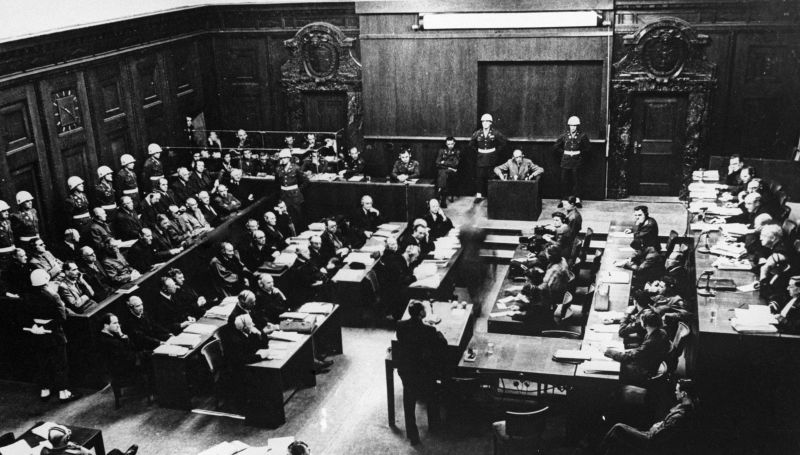
Keitel is reported to have stood up to Hitler and a number of his deputies on several occasions and quickly became known for his strong principles.
In 1935 he was promoted to chief of the new Armed Forces Office before finally becoming the Chief Supreme Command of Armed Forces.
During the Nuremberg Trial, Keitel, 64, was convicted of planning and waging a war of aggression, of war crimes and of crimes against humanity.
Although he requested a military execution by firing squad, he was executed by hanging in 1946.
Gustav Krupp
Gustav Krupp von Bohlen und Halbach - to give him his full aristocratic name - was head of the famous Krupp armaments firm, which was at the forefront of Germany’s war effoert.
The Krupp company - which also built U-boats at its shipyard in Kiel on the Baltic - made extensive use of forced labour in eastern Europe.
He was too ill to face trial and died in 1950, aged 79, without having faced justice.
His son Alfried was convicted of crimes against humanity but spent only three years in jail before the US High Commissioner for Germany, John McCloy, arranged for him to be pardoned.
Krupp merged with steel producer Thyssen in 1999 and the Thyssen-Krupp conglomerate remains one of Germany’s largest employers.
Robert Ley
Originally trained as a military aviator, Robert Ley was shot and seriously injured during the First World War, purportedly developing a drinking problem after being discharged.
In 1925 Ley joined the National Socialist German Workers’ Party and became an outspoken advocate and loyal follower of Adolf Hitler.
Keen to surround himself by “yes men” Hitler appointed Ley as the Gauletier of Cologne in 1928 and then promoted to Head of the German Labour Front in 1933, a role created to replace the traditional trade unions which had been banned by the Nazis.
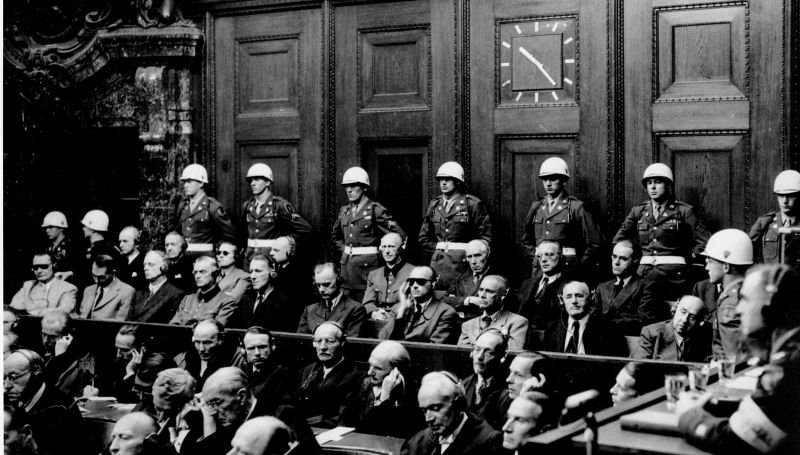
Ley was known to drunkenly rant and behave erratically, but he was protected by Hitler and remained close to him until fleeing to southern Germany in April 1945.
On 21 October 1946, he was convicted of crimes against humanity and conspiracy to wage war, but he hung himself with a towel in his cell, before the sentence could be carried out.
Konstantin von Neurath
A Swabian aristocrat, Baron Konstantin von Neurath was the governor of Bohemia and Moravia from 1939 until 1943, when he resigned.
But for much of his time he deferred to Reynhard Heydrich, a senior SS officer whose rule of fear in Bohemia came to an end when he was assassinated by Czech partisans in 1942.
Franz von Papen
A former First World War general, Franz von Papen was a conservative politician who helped pave the way for the Third Reich.
While Von Papen did not support all aspects of National Socialism or Hitler’s more extreme political beliefs, he was determined to overthrow the Weimar Republic.
Von Papen successfully persuaded President Hindenburg he could keep Hitler’s extremist Nazi ideals in check, and on 30 January 1933 Hitler was appointed Chancellor, with Von Papen as his vice-chancellor.
Following the appointment of this new order, the Nazi regime increased its brutality and as one of Hitler’s critics, Von Papen became alienated.
He was eventually forced out of the cabinet and relegated to minor diplomatic responsibilities.
At Nuremberg he was acquitted of all charges, proof that he had been sidelined once Hitler got into power.
Von Papen lived until 1969 and after the war he attacked the new Federal Republic of Germany on paper and frequently clashed with journalists and historians about the Nazi years.
Erich Raeder
Erich Raeder had joined the Imperial German Navy in 1894 and took part in the Battle of Jutland during the First World War.
Raeder rose to become head of the Kriegsmarine during the 1930s and formulated much of Germany’s war policy, including the invasion of Norway in 1940.
He clashed frequently with Hitler over strategy and felt the planned attack on Britain in 1940 and the subsequent invasion of the Soviet Union were both mistakes.
Hitler, who tended not to value naval power, rejected Raeder’s advice to tilt the German war machine’s focus towards the Mediterranean and he was eventually replaced as supreme naval commander by Donitz in January 1943.
Convicted of war crimes and crimes against humanity he was sentenced to life in prison but was released due to ill health in 1955 and died five years later, aged 84.
Joachim von Ribbentrop
Before the war Joachim von Ribbentrop had been Germany’s Ambassador to Britain but beyond the diplomatic veneer lurked a Nazi fanatic.
Germany’s Foreign Minister, he was best known for the Molotov-Ribbentrop Pact which was negotiated with the Soviet Union shortly before the start of the war.
But during the war he was heavily involved in the deportation of Jews from various occupied countries to the death camps in Germany and Poland.
Convicted on all four counts, he was sentenced to death and executed in October 1946.
Alfred Rosenberg
Born in what is today Tallinn in Estonia, Alfred Rosenberg was one of the Nazi Party’s top ideologues and was fanatically devoted to Hitler’s lebensraum (living space) concept - conquering huge swathes of land in Poland and the Soviet Union and making the Slav inhabitants a slave class beneath German settlers.
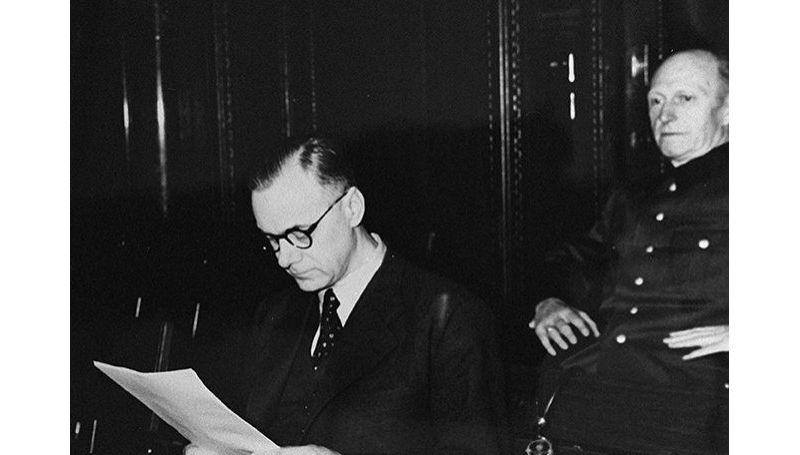
Despite, or perhaps because of, his Jewish-sounding surname Rosenberg was a fanatical anti-Semite and the Reich Ministry he led was crucial to the administration of the Holocaust.
As the German army retreated from 1943 onwards Rosenberg’s role as governor of the occupied territories in the Soviet Union meant he became increasingly peripheral.
But he remained a steadfast Hitler loyalist until the last day of the war.
Sentenced to death for crimes against humanity, he was executed in October 1946.
His ashes, along with the other executed men, were thrown into the river Isar in Munich.
Fritz Sauckel
Fritz Sauckel was the Gauleiter of the Thuringia region and then head of the forced labour department.
He rounded up five million slave labourers for work in German farms and factories.
Convicted of war crimes and crimes against humanity, he was sentenced to death and executed in October 1946.
Dr Hjalmar Schacht
Dr Hjalmar Schacht was the economics minister between 1933 and 1937 and then government minister without portfolio.
In 1944 he was arrested after suspicion fell on him following the bungled plot to assassinate Hitler in East Prussia.
He was acquitted of all charges, with the British, American and French judges overruling the Soviet judges.
After the war he founded a bank in Dusseldorf and lived comfortably before dying in 1970, aged 93.
Baldur von Schirach
Baldur von Schirach was one of the earliest members of the Nazi Party and penetrated the innermost circle, despite being a lot younger than his peers.
Von Schirach hungrily consumed Nazi approved literature, such as Henry Ford’s The International Jew, and quickly became a fervent anti-semite and dedicated follower of National Socialism.
His enthusiasm for the cause and flair for mobilising youth led Von Schirach to be appointed to the role of Reich Youth Leader in 1931, at the age of 24.
Von Schirach was responsible for organising the enormous youth march in Potsdam in 1933, where thousands of young people congregated to greet Hitler.
He spent his subsequent years directing the Hitler Youth.
After being taken prisoner in 1945, he was indicted and faced trial for crimes against humanity.
During the trial, he appeared to confess his crimes: “It is to my guilt that I educated German youth for a man who committed murders millionfold.”
Von Schirach was jailed for 20 years and died in 1974, eight years after being released.
Arthur Seyss-Inquart
Arthur Seyss-Inquart served in the Austro-Hungarian army in the First World War and in the 1930s was the leader of the Austrian Nazis, who championed unification with Germany.
In 1938 he became Chancellor of Austria and after the Anschluss, he welcomed the incorporation of Austria into Hitler’s “Thousand Year Reich”.
He later served as deputy governor of occupied Poland and became Reichskommissar (commissioner) of the Netherlands when that nation too was invaded by German troops.
Seyss-Inquart was responsible for the mass deportation of around 120,000 Dutch Jews - including Anne Frank and her family - and many other atrocities in the Netherlands.
Ironically one of the British soldiers who captured him was Norbert Mueller, a German Jew who had escaped to England in the Kindertransport. Mueller’s entire family died in the Holocaust.
Convicted of crimes against humanity, he was sentenced to death and executed in October 1946.
His last words were: “I believe in Germany.”
Julius Streicher
Julius Streicher founded Der Stürmer newspaper in 1923 and continued to edit it right up until 1945.
The weekly newspaper published crude anti-Semitic cartoons and also denounced any Germans who dared to try and defend their Jewish friends, neighbours or workmates.
In February 1940 he fell from grace after being accused of embezzling property which had been confiscated from deported Jews.
He was stripped of his office as Gauleiter of Franconia but continued to publish Der Stürmer, which was the only newspaper Hitler read from cover to cover.
At the Nuremberg trial he was snubbed even by his fellow Nazis, who were disgusted by his crude sexual remarks to female interpreters and prison guards.
Convicted of crimes against humanity, he was sentenced to death. When he was hanged his neck did not snap, but instead he died from a long, slow strangulation.
